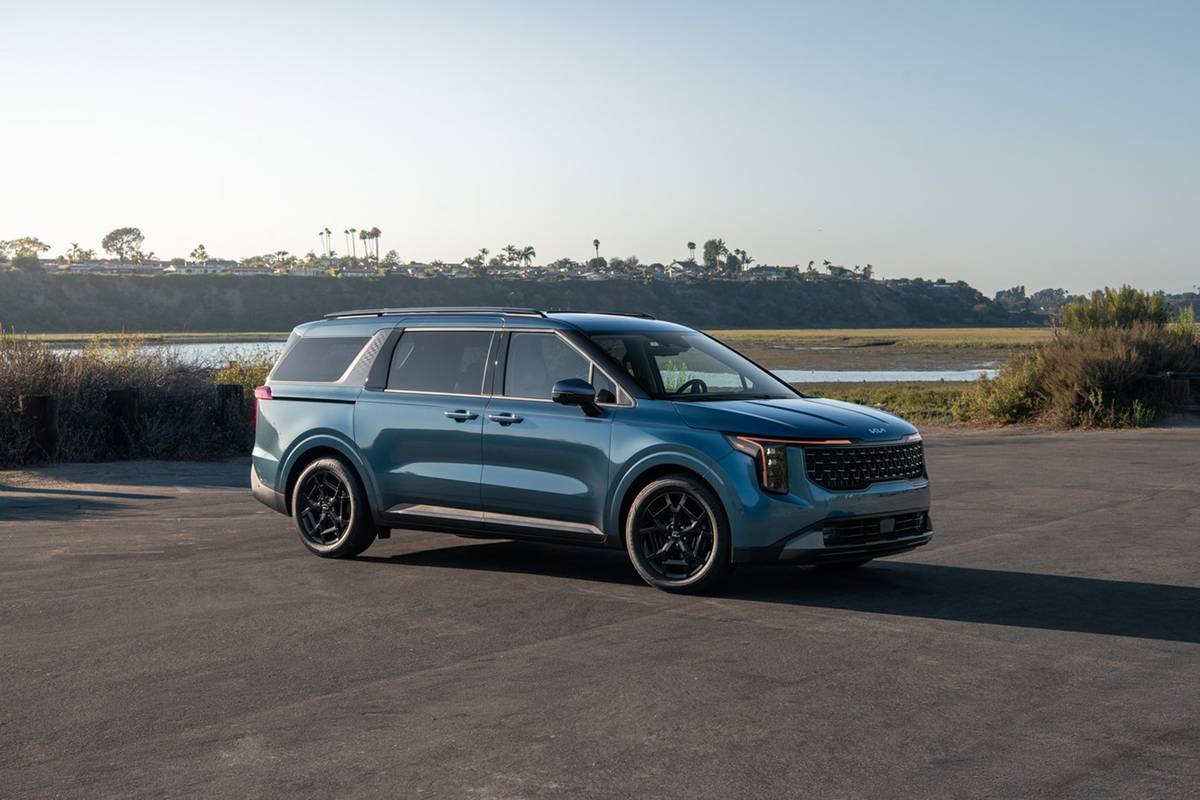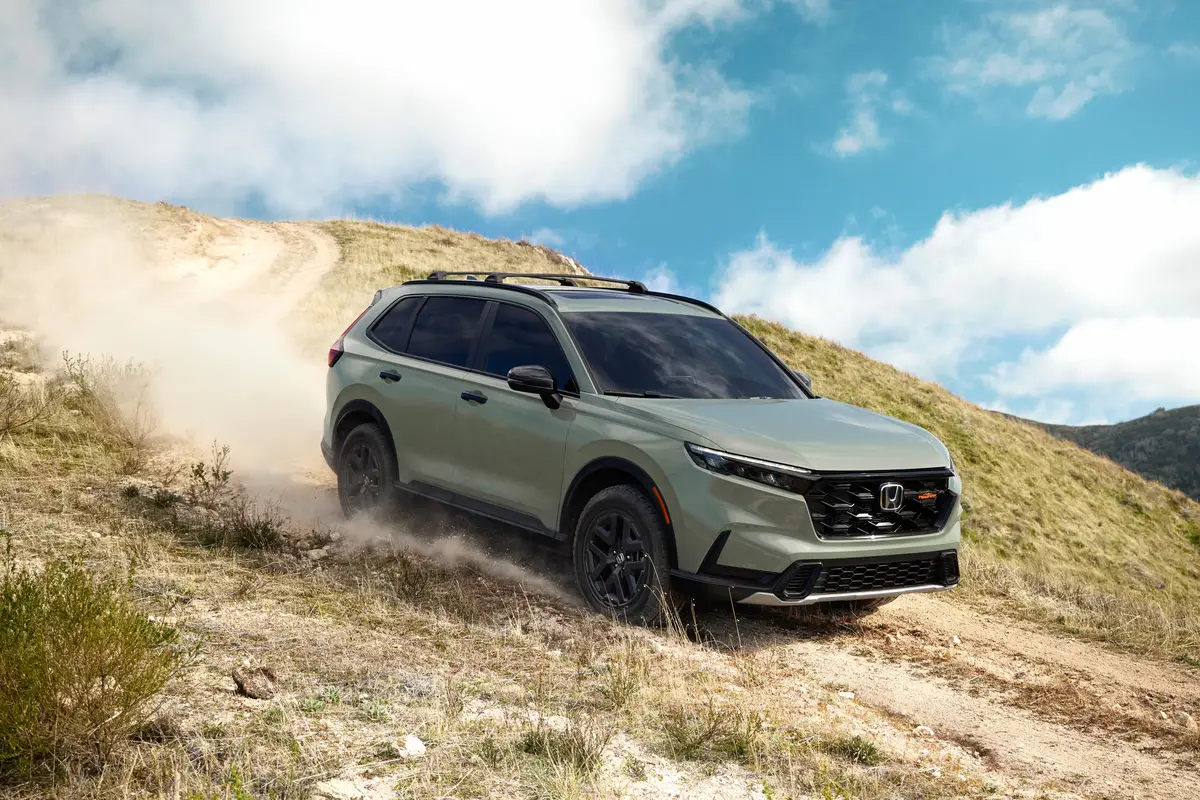chicagotribune.com's view
General Motors had two choices, produce a full-size, heavy-duty truck to compete with Ford and Dodge or start wearing a pillow to cushion the blow of continually getting kicked in the butt by its two rivals.
“We’ve underperformed in the heavy-duty truck market for years,” admits John Farris, assistant brand manager for Silverado at Chevrolet.
“We beat Ford when it comes to light-duty, half-ton pickup sales, but Ford is the leader in heavy duties. We haven’t been competitive, especially not when it comes to diesels,” Farris said.
In 1992, full-size truck sales stood at 1.2 million units. In 2000 sales will top 2.2 million divided among five players, Ford, Dodge, Chevy, GMC and Toyota.
Of the total, light-duty half-tons account for about two-thirds of sales, and heavy-duty three-quarter and one-tons account for about a third.
How poorly has GM fared in heavy-duty trucks? Consider the numbers. While heavy-duty trucks represent a third of the market, GM’s share is roughly a third of that. And while diesels represent close to 50 percent of all heavy-duty truck sales, GM’s share of diesel sales is 2 percent.
GM’s share hasn’t been helped by the Ford heavy-duty four-door Crew Cab either, which has boosted Ford’s share of the heavy-duty market to about 40 percent this year, from 30 percent last year.
“We account for about 43 percent of all half-ton pickup sales [Ford’s light-duty share is 40 percent], yet we account for only about one-third of heavy-duty trucks — and only 2 percent of all heavy-duty diesel truck sales. If we could get 43 percent of the heavy-duty market like we do of the light-duty market …” Farris says while pausing to consider the chance to finally unseat Ford as the industry’s truck-sales champ for 23 years.
One reason for GM’s poor showing in heavy-duty trucks is that it hasn’t redesigned and re-engineered the lineup since 1988.
The heavy-duty had to wait while the high-volume models were changed. The full-size Chevy Silverado and GMC Sierra light-duty pickups were upgraded for the 1999 model year and Chevy Suburban/Tahoe, GMC Yukon XLT/Yukon sport-utility vehicles were redone for 2000. All are built off the Silverado/Sierra platform. For 2001, it’s the heavy-duty truck’s turn.
“Can we take the truck sales lead away from Ford? We blow them away in half-tons, but we’d need to produce 300,000 heavy duties each year for overall truck leadership,” said Jim Kornas, Sierra brand manager for GMC. “We’ve been selling about 185,000 heavy-duty trucks annually, but with the new models we’re shooting for 250,000 sales for 2001 and hope eventually to get to 300,000 plus.
“But truckers have long memories, and we have to build trust with them again through word-of-mouth one sale at a time,” he said.
The primary problem for years was the diesel, the engine of choice in heavy duties. GM marketed a 6.5-liter, 190-horsepower V-8 that delivered 430 foot-pounds of torque. That diesel didn’t work very well or very often.
For 2001 the base engine in the heavy-duty GM pickups is a 6-liter V-8 rated at 320-h.p. and 360 foot-pounds of torque.
The engine GM is counting on to boost heavy-duty truck sales, however, is a new 6.6-liter V-8 from Isuzu rated at 300 h.p. and 520 foot-pounds of torque. The 6.6-liter replaces the 6.5-liter diesel.
In addition to the huge increase in horsepower and torque for off-the-line power, towing and hauling, the 6.6-liter Duramax delivers about 19 percent better mileage, Farris said. We don’t know what the 6.5 got or what the 6.6 gets because automakers don’t have to report fuel-economy ratings for heavy-duty trucks, so we’ll have to take GM at its word for now.
We tested a pair of GM heavy-duty trucks, the Chevy Silverado Crew Cab with Duramax diesel and the Silverado extended cab with optional 8.1-liter gas V-8 (340 h.p., 455 foot-pounds of torque).
We’ll focus on the Crew Cab with diesel because that should be the volume leader and attract more than the 2 percent of buyers GM has been getting in heavy-duty diesels, not only because of the potent yet fuel-efficient engine but also because of all the room and comfort in a cabin you access with four swing-out doors versus two swing-outs upfront and two swing-back rear access doors on the extended cab.
If it weren’t for a little of the typical diesel commotion under the hood at startup and having to pull up to a pump bathed in the odor of diesel fumes that linger on your clothes all day if not careful, the Duramax is so potent it’s easy to see why GM is counting on it to bring it back to heavy-duty respectability.
What a pleasant difference 300 h.p. makes versus that old 190-h.p. diesel, though what a most pleasant difference 520 foot-pounds of torque makes. No longer will the heavy-duty GM truck owner feel as if towing the Queen Mary when the vessel tied to the hitch is a bass boat.
The 8.1-liter gas V-8 in the extended cab Silverado tested delivers greater h.p. and less noise than does the Duramax diesel in the Crew Cab — 340 h.p. to the diesel’s 300 h.p. — but the Duramax is the clear leader when it comes to torque — 520 to 455 foot-pounds — for the ability to pull the big loads with less effort and less fuel consumed. Have to suspect those who tow boats and trailers will appreciate the diesel’s power and mileage the most.
While heavy-duty means it will perform work tasks, Farris said the growth in the market is personal usage.
“People want to tow bigger boats and want bigger trailers to tow more snowmobiles. They have an appetite for more power for more payload,” he said.
One other difference worth noting between the extended and Crew Cabs. If you need more cargo space inside, the seat bottom cushion in the extended cab lifts up and against the rear seat back to expose more room, whereas on the Crew Cab that seat cushion bottom flips forward against the front seat backs and the rear seat back then folds down flat on the floor to provide the most cargo room.
Both offer four-wheel-drive that’s engaged with a push of a knob in the instrument panel. Nice touch. The extended cab, though it has a back seat to carry an infant, comes with a passenger-side air-bag cutoff switch for the front seat. When deactivated, the switch lights up as a warning the bag won’t deploy, a light that can be seen easily day or night. Another nice touch. The Crew Cab doesn’t have the cutoff switch.
But the Crew Cab has the nicer rear seat design. The extended cab headrests lean forward, which forces your body to lean forward and makes for uncomfortable long-distance travel for adults. Won’t bother little kids, but it will irritate the devil out of adults. The Crew Cab cabin is ballroom-like in its roominess, and the rear seat doesn’t force you to lean forward.
Of course there has to be some unsettling news about the new trucks, the primary annoyance being that demand exceeds supply in the traditional slow ramp of new models and GM expects supplies to be tight for up to eight months. That means your patience will be tested awaiting delivery, and your budget will be tested because there won’t be any discounts. Ordering a short-supply heavy-duty truck will be like ordering a short-supply Chrysler PT Cruiser, only you can get more Cruisers on a delivery truck at a time.
The Crew Cab base LS version we tested starts at $31,329. Add $4,310 for the Duramax diesel (the 6.5 had been a $2,860 option) and an equally hefty $2,295 for the new 5-speed automatic, a transmission needed to handle the added horsepower and torque, GM says.
The electronic push-button 4WD activation system added $150, and heavy-duty trailering package another $190. For $1,705 you can add leather seats, though we’d probably use the $1,705 to help offset the cost of the 5-speed automatic.
The 4WD extended-cab in uplevel LT version starts at $33,785. Add $600 for the 8.1-liter gas engine and $1,200 for the 5-speed automatic.
Added touches in both include an ample number of power plugs, cup, coin and even tissue holders — big box, not the pocket pouch. Also, GM’s OnStar emergency communications system is standard for 2001.
2001 Chevrolet Silverado HD Crew Cab
Wheelbase: 153 inches
Length: 237.3 inches
Engine: 6.6-liter, 300-h.p. V-8 diesel
Transmission: 5-speed automatic
Pluses: Finally a redesign and finally a potent diesel to compete with Ford and Dodge as well as erase memories of former 6.5-liter diesel. Wealth of cabin room. Four doors for easy entry to/exit from that cabin. Lots of towing capability.
Minuses: Finding one. And when you do, finding the money to pay for one.
Latest news



